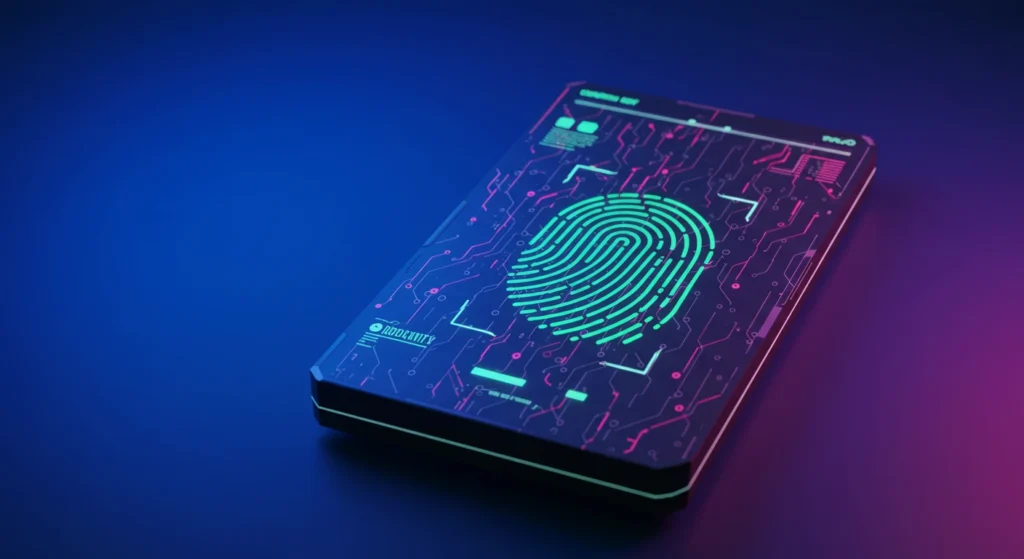How to Protect Your Crypto Identity on Social Media
Table of Contents
I want you to picture a quiet thought you had about crypto. You typed it into a post. Later, strange people started asking questions. You felt exposed. That unsettled feeling is real. Social media can spread small things into big problems. This article helps you keep your crypto life private, steady, and safe.
Crypto Identity is at the very start of the second paragraph. It is the way people link you to your crypto activity online. Some people want to be public. Others want privacy. Either way, protecting your crypto identity helps you avoid scams, doxing, and stress.
Why protecting your Crypto Identity matters

When your crypto and your social life mix, risks appear. A public wallet address, a brag about a gain, or even a simple photo can let the wrong person learn too much. Here are some common dangers:
- Scammers follow public posts and target people who show they hold crypto.
- Doxing happens when someone finds and shares your private real-world info.
- Phishing scams appear as messages asking for your keys or passwords.
- Identity theft can start from small links you didn’t mean to share.
Protecting your Crypto Identity is not paranoia. It is smart common sense. Think of it like locking your front door before you sleep.
Start with secure social media accounts
Secure social media accounts are the foundation. If your account is weak, everything else is at risk.
Make strong passwords and use a password manager
A long, unique password for each account matters. Use a password manager to create and store them. Don’t reuse passwords across sites.
Turn on two-factor authentication (2FA)
Use 2FA for every platform that offers it. Prefer an authenticator app or hardware key over SMS. SMS can be vulnerable to SIM swap attacks.
Check account recovery options
Set recovery emails and phone numbers carefully. Use a secondary email that is secure and not tied to your public profile. If possible, remove phone numbers from public recovery lists.
Review connected apps and permissions
Social platforms and third-party apps often ask for permissions. Revoke any old apps you don’t use. Only grant minimum access.
Keep personal information off your profiles
Small details add up. Dates, locations, family names, and photos can be pieces of a puzzle.
- Avoid posting your full birth date, home town, or exact work address.
- Use a nickname or handle that does not include your legal name.
- Don’t post photos that show your home address, car plates, or personal documents.
- Be careful with check-ins and location tags. If you tag a cafe, you tell people where you were.
These are simple online privacy measures that make it harder for someone to link your online name to your real life.
Separate your crypto persona from your personal persona
Many people find it useful to create a separate account for crypto activity.
- Use a dedicated email for crypto accounts.
- Create a different username that does not match your personal profile.
- Avoid using the same profile picture or unique phrases across both accounts.
This separation helps prevent casual connections. It keeps your family life, job, and finance discussions away from your crypto activity unless you choose to combine them.
Be mindful about wallet addresses and transaction links
It’s easy to copy a wallet address into a post. But every wallet address is public and traceable.
- Do not post your wallet addresses publicly unless you want anyone to see your transactions.
- When asked to prove ownership, prefer signing a message off-chain instead of posting addresses tied to personal profiles.
- If you must post an address, consider generating a fresh address that is not linked to high-value holdings.
These steps are part of crypto identity protection and help reduce unwanted tracking.
Think twice before replying to DMs or tagged messages
Scammers use direct messages and tags to create urgency or fake help.
- Never click suspicious links in DMs, even from friends — their accounts may be compromised.
- Verify requests for money or sensitive info through another channel. Call or use a separate verified contact.
- If someone asks you to move funds or share a key, treat it as a red flag.
These social media cybersecurity tips protect you from common tricks.
Use privacy settings — and understand them
Every platform has settings that affect who sees your posts, who can message you, and who can find your account.
- Set profiles to private when possible.
- Limit who can comment, tag, or mention you.
- Turn off public searches that link your real name to your profile.
- Use platform-specific controls to restrict message requests and third-party app access.
Adjust settings for each site. Privacy defaults are often open. Take a few minutes to tighten them.
Watch your language and tone
The words you use can reveal intent or identity.
- Avoid posting detailed investment plans or future buys.
- Don’t broadcast when you will be offline or on vacation. That invites trouble.
- Use neutral language about holdings. Saying “I hold a lot” draws attention; “I own crypto” is sufficient.
Small changes in style reduce your visibility to opportunists.
Use avatars and generic visuals
Photos are powerful. A profile picture of your face can link many accounts together.
- Use an avatar or an image that does not show your face.
- If you use a photo, keep it low-detail and not clearly recognizable across many profiles.
- Avoid pictures with metadata or geotags. Strip EXIF data before posting photos.
Visual choices are simple but effective personal information security measures.
Be careful with “proof of life” requests
Some communities use “proof of life” or verification to show real participation. These often require personal details.
- Prefer proofs that don’t reveal personal data. For example, a signed message from your wallet with a public post, not a selfie with ID.
- If a platform requires identity verification, consider whether that platform is essential and whether you can use a separate account.
Choose safer verification paths that don’t sacrifice your privacy.
Manage followers and connections
Your followers list is a map. Keep it clean.
- Review follower requests before accepting.
- Remove strangers who don’t add value.
- Use lists or groups to segment trusted readers from the public.
Keeping your circle tight reduces the odds that someone will spy and collect info.
Think about cross-platform leaks
Often the link between identity and crypto is not from one post. It is the pattern across platforms.
- Avoid using the same username across personal and crypto accounts.
- Don’t post screenshots of private messages that show your other handles.
- Regularly search for your usernames and wallet addresses to see what shows up.
Patterns create the map attackers use. Break the pattern.
Use privacy-enhancing tools and services
There are tools that help protect privacy.
- Browser privacy modes and ad blockers reduce tracking.
- VPNs help mask location when posting.
- Email alias services keep your real email hidden.
- Privacy-first social platforms limit data collection.
These help with broader online privacy measures for peace of mind.
Secure your devices
If your phone or laptop is compromised, all your profiles are at risk.
- Keep devices updated. Install security patches.
- Use device locks and biometric protection.
- Install trusted antivirus or security apps if needed.
- Avoid public Wi-Fi when accessing sensitive accounts, or use a VPN.
Device security is the last line of defense for your Crypto Identity.
Responding if you are targeted
If you feel targeted, act quickly.
- Make accounts private or temporarily disable them.
- Change passwords and enable 2FA.
- Report abusive or doxing posts to the platform and request removal.
- Document threats and, if needed, involve local law enforcement.
- Alert friends and family if private information has been exposed.
Quick steps can limit damage and protect your mental health.
Final thoughts — protect privacy gently and consistently
Protecting your Crypto Identity is not about hiding all the time. It’s about smart choices. A few simple habits—separate accounts, careful posts, strong passwords, and privacy settings—make a big difference. Treat your social media like a public square. Speak, share, and enjoy, but keep your private life and keys behind a locked gate.
You do not need to be perfect. Small, steady steps give you breathing room. That calm makes crypto more fun and less stressful.
Quick actions you can do today
- Set strong, unique passwords and use a password manager.
- Turn on 2FA with an authenticator app or hardware key.
- Create separate accounts for personal life and crypto.
- Remove wallet addresses and transaction links from public posts.
- Make profiles private and review follower requests.
- Strip EXIF data from photos before posting.
- Use VPN and browser privacy tools for added protection.
- Revoke old app permissions on social platforms.
- Test account recovery settings and secure recovery emails.
- Keep devices updated and locked.
FAQ
Q: Should I ever post my wallet address on social media?
A: Only if you want everyone to see your transactions and balance. If you need to share, prefer a fresh address not linked to large holdings. For proof of ownership, sign a message instead of posting an address tied to your public profile.
Q: Can I use the same username for personal and crypto accounts?
A: It’s safer not to. Different usernames reduce the chance someone connects your personal life to crypto activity.
Q: Is two-factor authentication enough?
A: 2FA is essential, but combine it with strong passwords, device security, and cautious sharing. Prefer authenticator apps or hardware keys over SMS.
Q: What if someone tries to dox me?
A: Make accounts private, document the posts, report to platforms, change passwords, and if needed, involve local authorities. Consider seeking legal advice for severe cases.
Q: How do I check for privacy leaks across platforms?
A: Search for your usernames and wallet addresses on major search engines, and check people-search sites. Set up alerts for your name and handles.

Hello, I’m Edmilson Dias, founder of CoinBringer. I created this platform to guide people through the fast-moving world of cryptocurrency with clarity and safety. With years of research in blockchain and digital security, my goal is to translate complex topics into practical knowledge, offering reliable tutorials, safety insights, and guidance for both newcomers and experienced users.
Discover more from CoinBringer
Subscribe to get the latest posts sent to your email.







